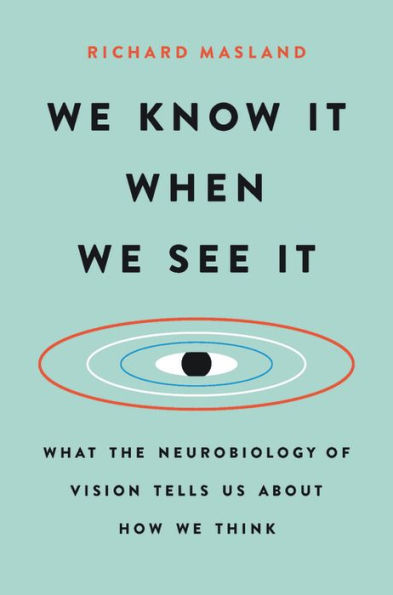We Know It When We See It: What the Neurobiology of Vision Tells Us About How We Think
A Harvard researcher investigates the human eye in this insightful account of what vision reveals about intelligence, learning, and the greatest mysteries of neuroscience.
Spotting a face in a crowd is so easy, you take it for granted. But how you do it is one of science's great mysteries. And vision is involved with so much of everything your brain does. Explaining how it works reveals more than just how you see. In We Know It When We See It, Harvard neuroscientist Richard Masland tackles vital questions about how the brain processes information — how it perceives, learns, and remembers — through a careful study of the inner life of the eye.
Covering everything from what happens when light hits your retina, to the increasingly sophisticated nerve nets that turn that light into knowledge, to what a computer algorithm must be able to do before it can be called truly "intelligent," We Know It When We See It is a profound yet approachable investigation into how our bodies make sense of the world.
1132404624
Spotting a face in a crowd is so easy, you take it for granted. But how you do it is one of science's great mysteries. And vision is involved with so much of everything your brain does. Explaining how it works reveals more than just how you see. In We Know It When We See It, Harvard neuroscientist Richard Masland tackles vital questions about how the brain processes information — how it perceives, learns, and remembers — through a careful study of the inner life of the eye.
Covering everything from what happens when light hits your retina, to the increasingly sophisticated nerve nets that turn that light into knowledge, to what a computer algorithm must be able to do before it can be called truly "intelligent," We Know It When We See It is a profound yet approachable investigation into how our bodies make sense of the world.
We Know It When We See It: What the Neurobiology of Vision Tells Us About How We Think
A Harvard researcher investigates the human eye in this insightful account of what vision reveals about intelligence, learning, and the greatest mysteries of neuroscience.
Spotting a face in a crowd is so easy, you take it for granted. But how you do it is one of science's great mysteries. And vision is involved with so much of everything your brain does. Explaining how it works reveals more than just how you see. In We Know It When We See It, Harvard neuroscientist Richard Masland tackles vital questions about how the brain processes information — how it perceives, learns, and remembers — through a careful study of the inner life of the eye.
Covering everything from what happens when light hits your retina, to the increasingly sophisticated nerve nets that turn that light into knowledge, to what a computer algorithm must be able to do before it can be called truly "intelligent," We Know It When We See It is a profound yet approachable investigation into how our bodies make sense of the world.
Spotting a face in a crowd is so easy, you take it for granted. But how you do it is one of science's great mysteries. And vision is involved with so much of everything your brain does. Explaining how it works reveals more than just how you see. In We Know It When We See It, Harvard neuroscientist Richard Masland tackles vital questions about how the brain processes information — how it perceives, learns, and remembers — through a careful study of the inner life of the eye.
Covering everything from what happens when light hits your retina, to the increasingly sophisticated nerve nets that turn that light into knowledge, to what a computer algorithm must be able to do before it can be called truly "intelligent," We Know It When We See It is a profound yet approachable investigation into how our bodies make sense of the world.
28.0
In Stock
5
1

We Know It When We See It: What the Neurobiology of Vision Tells Us About How We Think
272
We Know It When We See It: What the Neurobiology of Vision Tells Us About How We Think
272
28.0
In Stock

Product Details
| ISBN-13: | 9781541618503 |
|---|---|
| Publisher: | Basic Books |
| Publication date: | 03/10/2020 |
| Pages: | 272 |
| Product dimensions: | 5.60(w) x 8.60(h) x 1.10(d) |
About the Author
From the B&N Reads Blog
